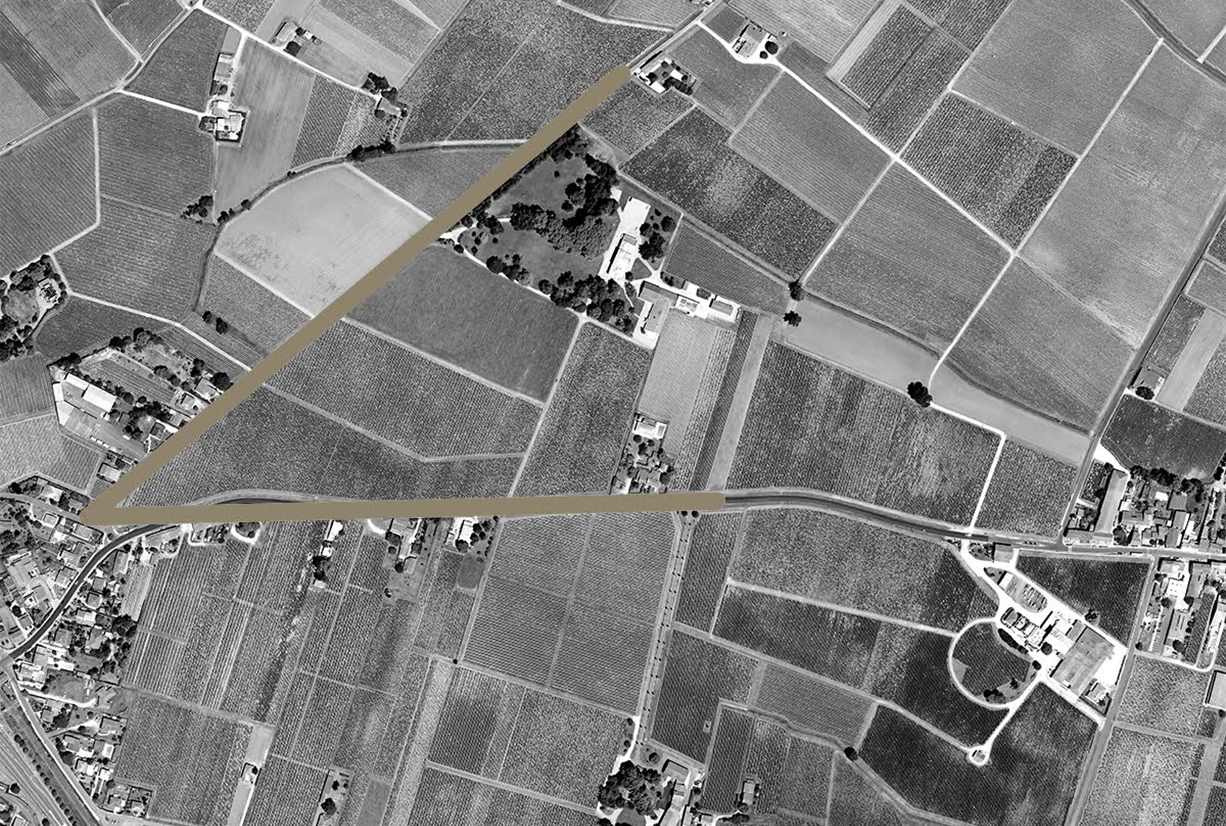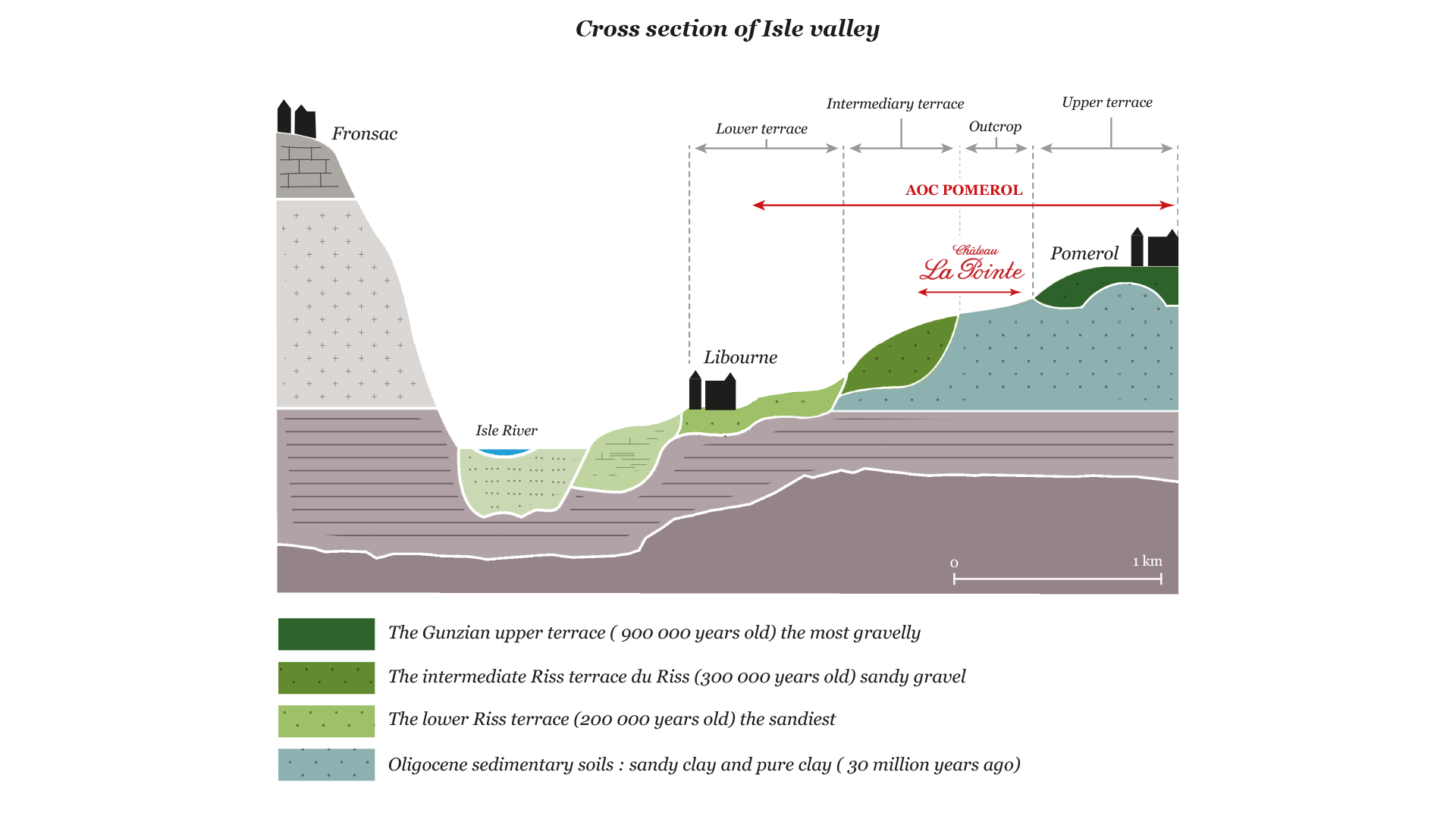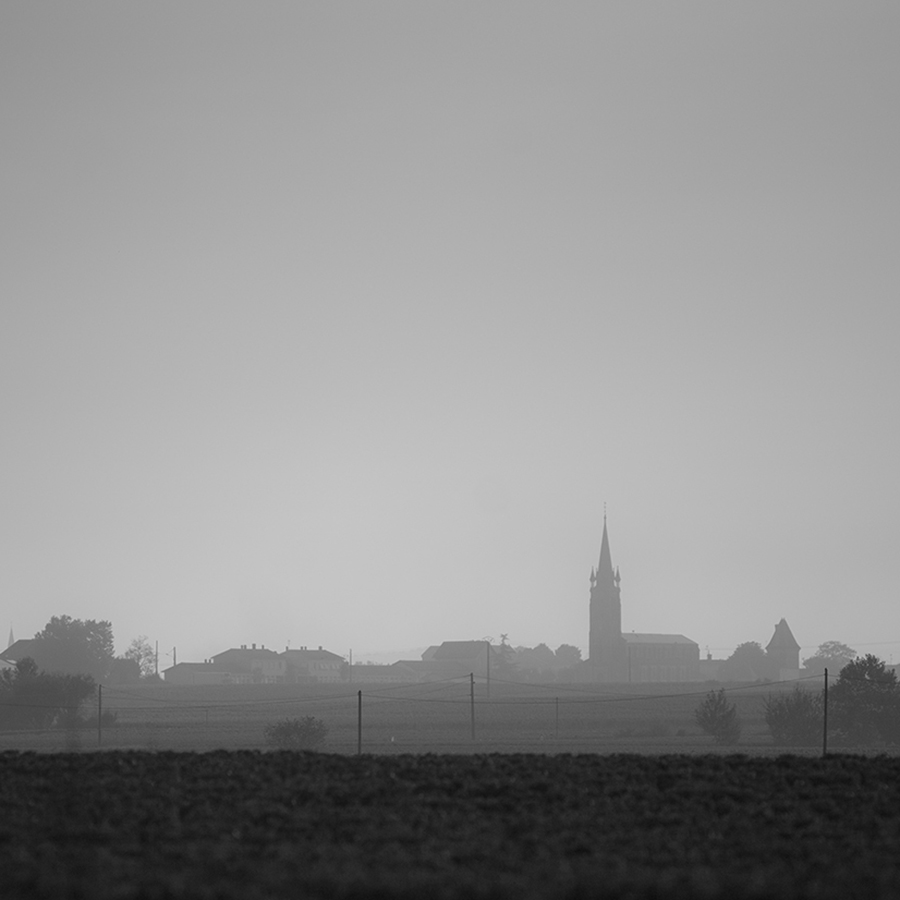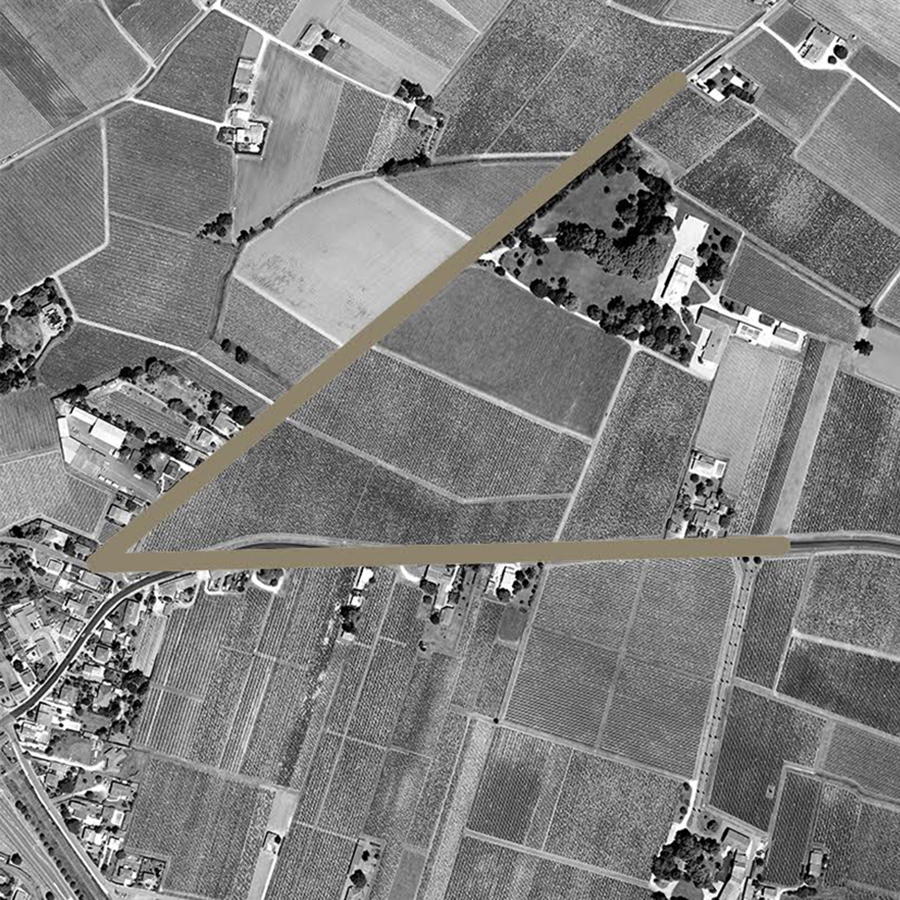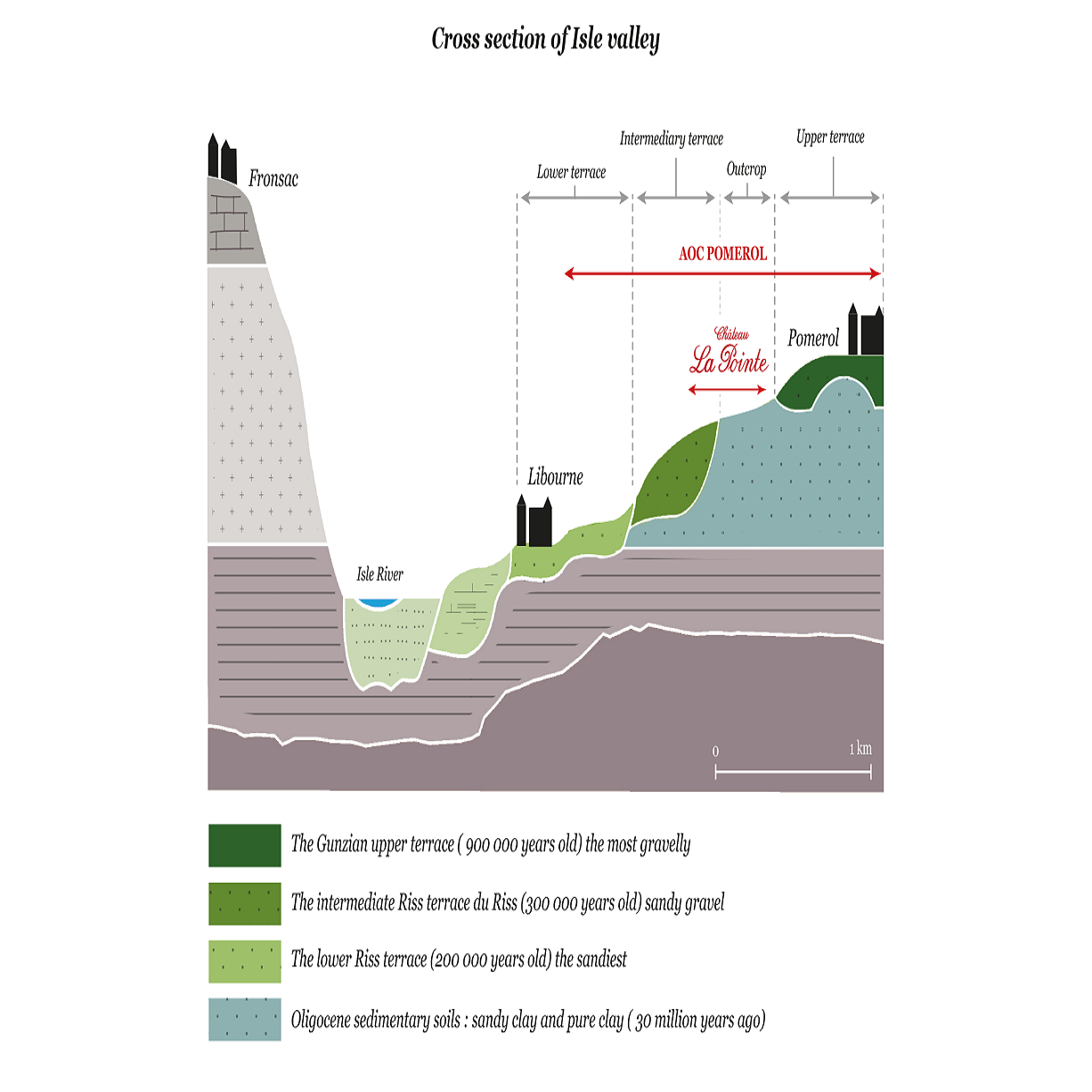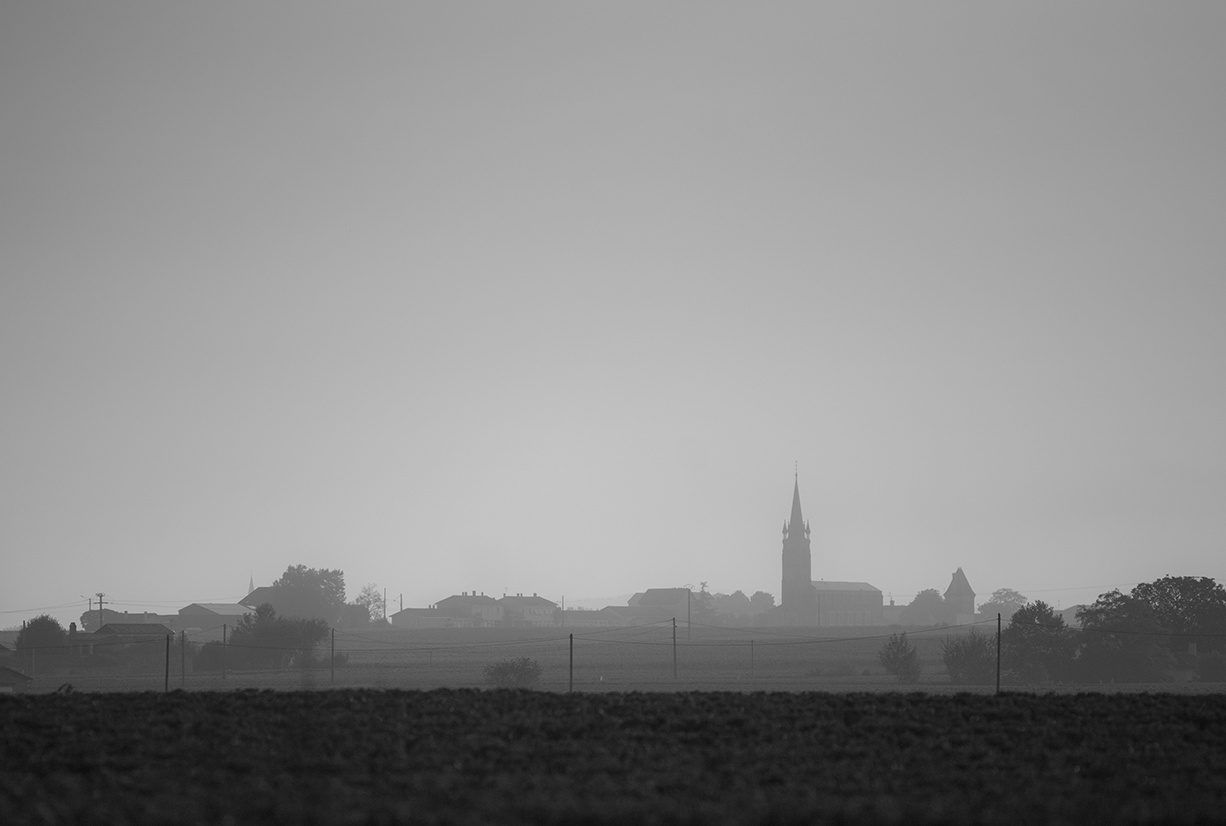

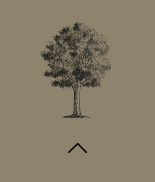
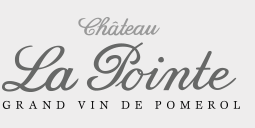

Pomerol, a land of its own
With barely 813 hectares, less than 1% of the Bordeaux vineyards, the appellation of Pomerol is a real nugget, producing rare, confidential wines. The average surface area of an estate is just 5 hectares, and there is certainly nothing rigid or uniform in this complex appellation where a myriad plots weave in and out of each other across different soils.
The appellation’s emblematic grape variety is Merlot, although the diversity of soils in Pomerol can also be conducive to growing great Cabernets Francs.
Château La Pointe, with its 23 hectares of vines in a single block, is able to produce 120 000 bottles per year, and is among the 5 largest properties in Pomerol, one of the most prestigious appellations of Bordeaux, along with Saint-Emilion, Margaux, Saint-Julien, Pauillac or Saint-Estèphe.
The origin of the name “La Pointe” stems from the vineyard’s singular geometry, there being a large pointed triangular vine plot at the entrance to the estate.
Fermer

Château La Pointe, a terroir revealed
Château La Pointe’s vineyard is located on the slope descending from the Château Trotanoy terrace, next to Château Nénin. Its terroir is made up of three main soil types :
–Gravel and pebble sector on the Isle River terrace : these exceptional soils, featuring a series of gravel resurgences sloping towards the west, are quite close to those found on Pomerol’s upper plateau.
–Clay-gravel sector : soils recognised as among the finest for winegrowing.
–Sector with more sandy soil over a layer of clay or gravel : soils offering high potential but suffering from an excess of water. A pedological and geological study was carried out in 2008, and major drainage work was performed on those parts of the vineyard with hydromorphic problems, ensuring a better water regulation. This type of operation, very common in renowned Châteaux, allows us to avoid excessive yields and obtain greater ripeness. Château La Pointe has thus seen an improvement in the balance of wines produced on this third sector over recent years.
Fermer

Origins of a great winegrowing soil
The notion of terroir is used so readily in sales pitches that the wine lover may wonder whether it is not more a question of marketing than an agronomic reality.Even the most ambitious investor would never be able to re-create a real terroir as the formation of a soil-type is the result of complex interactions over hundreds of thousands of years. This relationship with geological eras makes each terroir totally unique and non-reproducible, giving each wine its singularity.
Few agricultural soils are suitable for producing good wines, and few winegrowing soils are capable of producing great wines. Modern technical methods now mean we can easily make a good wine, but only a great terroir, with the intricacies of its own soil and character, will produce a Grand Cru.
Fermer
